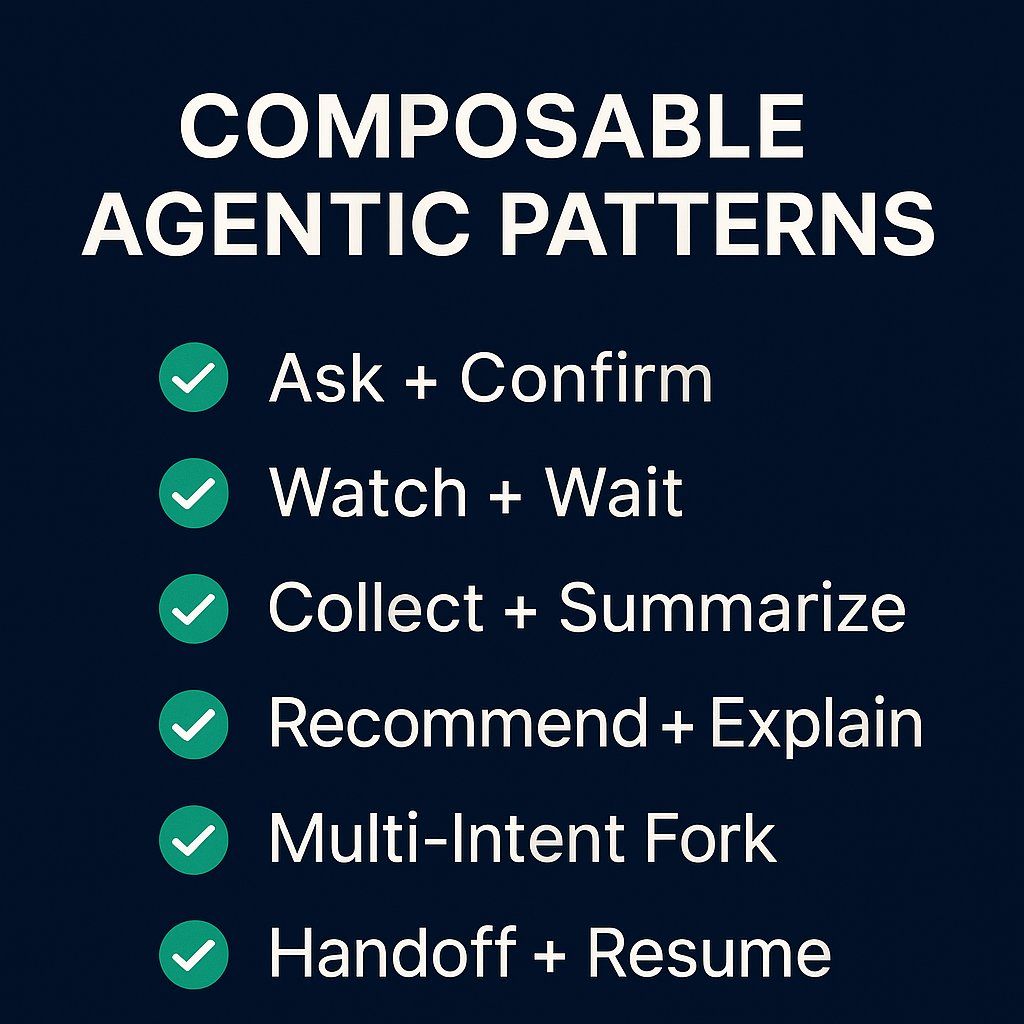
https://akfpartners.com/growth...
Intro
Agentic interfaces are shifting how software behaves, but we don’t yet have a shared vocabulary for how agents actually act. Most developers still reach for vague or overly technical terms when describing agent behavior. That slows collaboration and makes it harder to scale design patterns across teams.
This post introduces a new set of names for common agentic behaviors. These aren’t tied to any one framework or model. They’re meant to be composable, reusable, and clear enough to work across product, design, and engineering conversations.
Think of them as a starting point - a language for building smarter, more modular AI features.
Agentic interfaces are evolving fast. To keep them usable, maintainable, and effective, we need a shared language for how they work. This post defines a set of composable agentic patterns - modular behaviors that can be reused, extended, and orchestrated across workflows.
Each pattern is designed to be:
- Stateless or scoped per user/session
- Modular and chainable
- Governed by policy, not hardcoded logic
- Aware of tenancy, persona, and context
Core Patterns
Ask + Confirm
The agent gathers an input and then verifies it before taking action. Useful for reducing risk, increasing user trust, or staging automation.
Watch + Wait
The agent monitors a condition or data signal and triggers when the time is right. Often used for alerts, nudges, or threshold-based actions.
Collect + Summarize
The agent pulls from multiple sources and creates a concise output. Common in reporting, recap flows, or assistant-like behaviors.
Recommend + Explain
The agent suggests an action or path and provides rationale. Key for driving adoption of AI-generated actions and establishing credibility.
Multi-Intent Fork
The agent recognizes multiple simultaneous goals and begins work on all of them in parallel, tracking progress separately. High-value for productivity and triage workflows.
Handoff + Resume
The agent exits a flow with the ability to re-enter context later. Essential for long-running, multi-session tasks or inter-agent coordination.
Design Considerations
Scalability
Patterns must run independently and be easy to replicate. They use standard inputs/outputs and operate within clearly defined boundaries.
Multi-Tenancy
Every pattern must understand tenant isolation. That means no data leakage, tenant-scoped logic, and enforcement of policy constraints.
Persona Awareness
Patterns should adapt based on role, intent, or past behavior. The same pattern might behave differently for a frontline manager than for an executive.
Governability
Each pattern should be inspectable, auditable, and upgradable. They are versioned components that fit within broader safety and control systems.
Why This Matters
Composable patterns make agent behavior easier to design, test, and scale. They help product teams talk clearly about what an agent does, why it does it, and how that behavior fits into broader workflows.
Next Steps
In the next post, we’ll show how product managers can apply these patterns to real-world product narratives and user journeys. And for those ready to go deeper, we’re publishing detailed, standalone definitions for each agentic pattern - including guidance on fit, implementation, and design. This is the reference set we’ll build from.